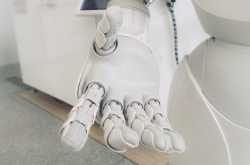A new interactive map shows climate change everywhere in the world. The map draws on five decades of public meteorological data recorded from 50,000 international weather stations around the Earth and allows students or researchers to compare the climates of places anywhere in the world.
New device harvests water from dry air. The system, based on relatively new high-surface-area materials called metal-organic frameworks (MOFs), can extract potable water from even the driest of desert air, the MIT researchers say, with relative humidities as low as 10 percent. Current methods for extracting water from air require much higher levels - 100 percent humidity for fog-harvesting methods, and above 50 percent for dew-harvesting refrigeration-based systems, which also require large amounts of energy for cooling. So the new system could potentially fill an unmet need for water even in the world's driest regions.
Next-gen optical disk made of gold. Researchers are using the durable power of gold to demonstrate a new type of high-capacity optical disk that can hold data securely for more than 600 years.The technology could offer a more cost-efficient and sustainable solution to the global data storage problem while enabling the critical pivot from Big Data to Long Data, opening up new realms of scientific discovery.
Fabric lights a lamp. Researchers have developed a fabric that converts kinetic energy into electric power. The greater the load applied to the textile and the wetter it becomes the more electricity it generates. he fabric can currently generate enough power to light an LED, send wireless signals or drive small electric units such as a pocket calculator or a digital watch.
Wearable monitor captures stomach activity. Researchers have developed a wearable, non-invasive system to monitor electrical activity in the stomach over 24 hours--essentially an electrocardiogram but for the gastro-intestinal (GI) tract. They found that data collected with the wearable system were comparable to data collected in the clinic with state-of-the-art methods, which are invasive--including a catheter inserted through the patient's nose. They also found that the stomach's electrical activity changes not only around meals, but also during sleep, following its own circadian rhythm.




